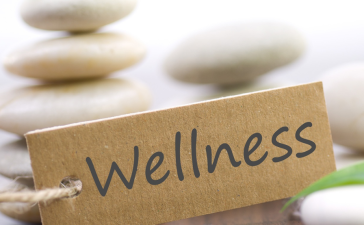In our modern world of endless to-do lists, screen time, and fast food, the concept of wellness has never been more important. While traditional healthcare focuses on treating illness, wellness is about prevention, balance, and creating a lifestyle that supports physical, mental, and emotional health. It’s a daily commitment to self-care, mindfulness, and habits that allow us to thrive—not just survive.
This article explores what wellness truly means, the core dimensions that define it, and practical steps you can take to live a healthier, more balanced life.
What Is Wellness?
Wellness is a proactive, intentional pursuit of health, happiness, and quality of life. It involves making conscious decisions to enhance your overall well-being, rather than simply reacting to illness or injury. Unlike healthcare, which often begins after symptoms arise, wellness is about building habits that prevent problems before they occur.
There are multiple dimensions of wellness that work together to support a healthy life:
-
Physical Wellness
-
Mental & Emotional Wellness
-
Social Wellness
-
Spiritual Wellness
-
Occupational & Financial Wellness
-
Environmental Wellness
True wellness is not about excelling in just one of these areas but finding harmony between them.

The Importance of Wellness in Daily Life
Modern lifestyles often lead to stress, poor eating habits, lack of sleep, and little movement—factors that directly contribute to physical and mental health issues. Practicing wellness can:
-
Boost immunity and reduce the risk of disease
-
Increase energy and productivity
-
Improve emotional stability and mood
-
Strengthen relationships
-
Enhance self-confidence and sense of purpose
-
Lead to a longer, more fulfilling life
Wellness is not a luxury—it’s a necessity. And the good news? You don’t need to completely overhaul your life to start feeling better. Small, consistent changes can make a significant difference.
The Pillars of Wellness
1. Physical Wellness
This dimension focuses on maintaining a healthy body through regular exercise, proper nutrition, quality sleep, and regular checkups.
Tips for improving physical wellness:
-
Exercise at least 30 minutes most days of the week
-
Eat a balanced diet rich in fruits, vegetables, whole grains, and lean proteins
-
Stay hydrated—aim for 6–8 glasses of water daily
-
Get 7–9 hours of sleep per night
-
Limit alcohol, avoid smoking, and practice moderation in all things
When you feel strong and energetic, it’s easier to stay focused, motivated, and emotionally resilient.
2. Mental and Emotional Wellness
Your mental health is just as important as your physical health. Emotional wellness involves recognizing, understanding, and managing your emotions effectively.
Ways to support mental wellness:
-
Practice mindfulness and meditation to reduce stress
-
Talk to a therapist or counselor when needed
-
Journaling can help you process thoughts and gain clarity
-
Cultivate gratitude—write down three things you’re thankful for daily
-
Practice self-compassion and avoid harsh self-criticism
Mental wellness is not about being happy all the time—it’s about having the tools to navigate life’s ups and downs.
3. Social Wellness
Humans are social creatures. Our relationships directly influence our mood, behavior, and even our longevity. Social wellness means building healthy, supportive, and meaningful connections.
Tips for social wellness:
-
Spend quality time with family and friends
-
Join a club, class, or community group
-
Volunteer or help others—giving back boosts your own happiness
-
Set boundaries with toxic or draining relationships
-
Learn to communicate openly and listen actively
Being part of a supportive social network improves not just happiness but also physical health.
4. Spiritual Wellness
Spiritual wellness is not necessarily about religion—it’s about having a sense of meaning, purpose, and connection to something greater than yourself.
Practices to enhance spiritual wellness:
-
Spend time in nature
-
Meditate or pray regularly
-
Reflect on your values and goals
-
Read or listen to content that inspires personal growth
-
Practice forgiveness and let go of past hurts
Spiritual wellness helps you stay grounded, especially in challenging times.
5. Occupational & Financial Wellness
These aspects of wellness relate to finding fulfillment in your work and managing money in a way that supports long-term stability and peace of mind.
Tips for occupational wellness:
-
Choose work that aligns with your strengths and values
-
Take regular breaks to avoid burnout
-
Maintain work-life balance by setting boundaries
-
Pursue professional growth and skill-building
Tips for financial wellness:
-
Create a monthly budget and track expenses
-
Save a portion of income regularly, even if it’s small
-
Avoid unnecessary debt and build an emergency fund
-
Seek financial education through books, courses, or advisors
A stable job and financial security reduce stress and allow you to focus on other areas of wellness.
6. Environmental Wellness
Our surroundings affect our health more than we may realize. Environmental wellness means living in a space that supports health, sustainability, and safety.
Improve environmental wellness by:
-
Keeping your home clean and clutter-free
-
Spending time outdoors regularly
-
Reducing waste and using eco-friendly products
-
Limiting exposure to harmful chemicals and pollutants
-
Creating a peaceful living space with plants, light, and calm décor
Feeling good in your space helps you feel good in your life.
Wellness Trends in 2025
The wellness industry is constantly evolving. Here are some current trends shaping the future of health:
-
Wearable wellness tech (e.g., fitness trackers, sleep monitors, smart rings)
-
Digital mental health platforms (teletherapy, meditation apps)
-
Plant-based and functional foods (like adaptogens, probiotics, and anti-inflammatory ingredients)
-
Workplace wellness programs offering mental health days, gym memberships, and mindfulness breaks
-
Personalized health solutions using DNA and gut testing to customize nutrition and wellness plans
These tools can help you track progress and stay motivated—but ultimately, the most effective strategy is consistency and self-awareness.

How to Create Your Personal Wellness Plan
Starting a wellness journey doesn’t have to be overwhelming. Follow these simple steps:
-
Evaluate your current state in each wellness area
-
Choose 1–2 areas to focus on first
-
Set small, achievable goals (e.g., walk 20 minutes daily, meditate for 5 minutes)
-
Track your progress using a journal or wellness app
-
Celebrate small wins and adjust when needed
Remember: progress is better than perfection.
Final Thoughts
Wellness is not a quick fix—it’s a lifelong commitment to self-care, growth, and intentional living. In a world full of distractions, taking care of your well-being is one of the most radical and powerful things you can do. It allows you to show up fully for yourself, your loved ones, and your life’s purpose.
You don’t need to do everything at once. Start where you are. Focus on what you can control. Be patient with yourself. And trust that every healthy choice, no matter how small, is a step toward a better, brighter you.





